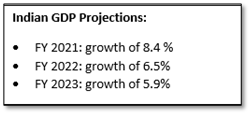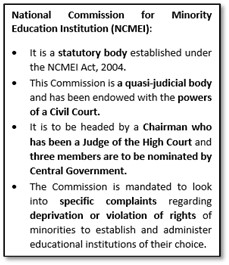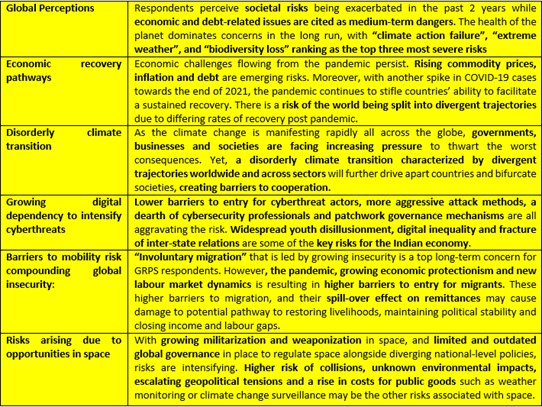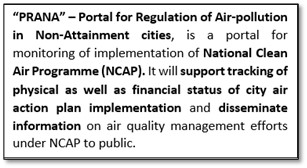Monday, 17th January 2022
India- Nepal Border Dispute
In News
Nepal has asked India to stop “unilateral construction and expansion” of roads in its East of Kali River territory.
What is the Dispute?
- In early 2020, India inaugurated a new 80 km-long road in the Himalayas, connecting to the border with China, at the Lipulekh pass.
- This fired up an age long dispute between India and Nepal regarding territories including Lipulekh, Limpiyadhura and Kalapani (Kalapani territory).
- Both India and Nepal claim Kalapani as an integral part of their territory — India as part of Uttarakhand’s Pithoragarh district and Nepal as part of Dharchula district.
- Although, India has been in effective possession of this territory for at least sixty years, Nepal refers to the 1815 Sugauli Treaty to legitimise its claims.
- The dispute arises in the fact that the River Kali has been shifting its course and there is no clarity as to the origin of the river.
- After the British left India, it maintained a police post in Kalapani since mid-1950's. From 1979-80, the Indo-Tibetan Border Police (ITBP) has been manning the boundaries.
Significance of the Kalapani region
- The region lies at the tri-junction of India- Nepal- and China, hence is of strategic importance to the Indian military forces given recurrent tensions with China in the Tibetan region.
- This is also an important route for thousands of Hindus who trek across the border with China every year to visit the sacred Mount Kailash.
The Map controversy
- In June 2020, Nepal’s Parliament approved the new political map of the country featuring areas which India maintains belong to it.
- After Nepal released the map, India criticised the move, calling it a “unilateral act” and cautioning Kathmandu that such “artificial enlargement” of territorial claims will not be acceptable to it.
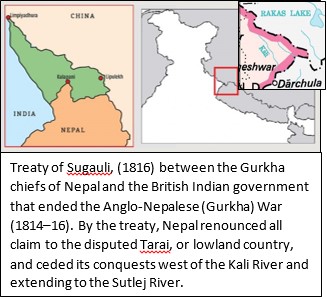

Efforts for resolution
- The Nepal-India Technical Level Joint Boundary Working Group was set up in 1981 to resolve boundary issues, to demarcate the international border, and to manage boundary pillars.
- It resolved all boundary issues except the two disputed areas of Kalapani and Susta.
Way Forward
- India- Nepal relations have been historically amicable. India’s leadership and the Indian people have been conscious of the self-respect and pride of the Nepalese people while, Nepal has in the past responded to India’s needs as a friendly neighbour.
- The people-to-people relationship between India and Nepal is unmatched.
- If the outstanding issues between these friendly neighbours festers any further, those who stand to gain by deteriorating India-Nepal relations will benefit.
- Hence, it is necessary to utilize existing mechanisms like diplomatic dialogue to formally approve the strip maps, resolve the two disputes, demarcate the entire India-Nepal boundary, and speedily execute the work of boundary maintenance.
Sources:
BrahMos Missile Export
In News
The Philippines has recently accepted Indian BrahMos Aerospace Pvt Ltd's proposal to supply a Shore-based Anti-Ship Missile System Acquisition Project for its navy.
About the News
- In 2021, both sides signed a defence arrangement to enable export of defence equipment to Philippines from India. However the pandemic, had hit the Philippines exchequer, delaying its order for the BrahMos missiles.
- Other Southeast Asian countries including Vietnam and Indonesia, have also expressed their interest in buying BrahMos from India to secure their defence architecture.
- In the backdrop of China asserting its illegal claim in the South China sea that has been threatening the maritime security and freedom of navigation of ASEAN nations like the Philippines, Indonesia, Brunei, etc, these nations look up to India as a potential net security provider.
- This has created a potential defence market for India to sell its advanced defence equipments.
- India got inducted into the Missile Technology Control Regime (MTCR) in 2016,that allows it to access high end missile technologies after which India upgraded its Brahmos Missile in collaboration with Russia.
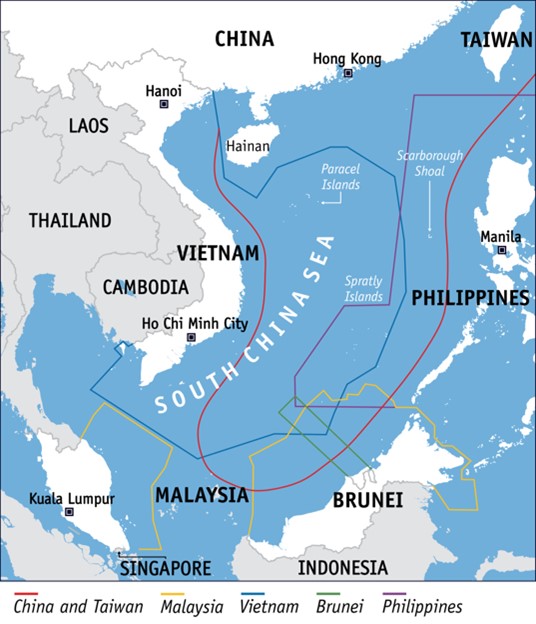
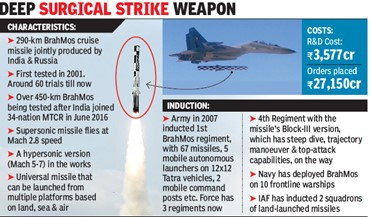
About Brahmos Missile
- The BrahMos is a medium-range ramjet supersonic cruise missile that can be launched from submarine, ships, aircraft or land.
- The name BrahMos is a portmanteau of two rivers, the Brahmaputra of India and the Moskva of Russia.
- It is one of the fastest supersonic cruise missiles in the world and is a joint venture between India and Russia.
- It is the world's fastest anti-ship cruise missile currently in operation. While the land-launched and ship-launched versions are already in service, the air-launched variant of BrahMos entered service in 2019.
- A hypersonic version of the missile is currently under development to boost aerial fast strike capability.

Source:
The mmWave band in 5G auctions
In News
The Telecom Regulatory Authority of India (TRAI) has sought industries’ views on topics related to quantum of 5G spectrum to be auctioned off.
About the News
- TRAI has asked the industry their views on band plan, block size, and conditions for auction of spectrum in new bands, which includes millimetre (mm) Wave band of 25-28.5 GHz.
- An industry body that represents interests of the communication satellite ecosystem in India has voiced concerns over the Government’s plan to include the mmWave bands in the spectrum auction, which is slated for later this year.
Why is mmWave band auction important for India?
- Area coverage: High bandwidth and shorter propagation makes 5G mmWave suitable for localized capacity complementing (e.g., transit stations, downtown/high streets, shopping malls, airports, venues).
- Population coverage: Majority of 5G mmWave base stations are going to be placed in high-demand spots, which will be non-residential areas.
- Percentage of connected or active time: Compared to other capacity-oriented cellular technologies, mmWave can transfer required data more quickly and thus can reduce traffic tremendously.
- Data management: 5G mmWave can deliver data management at fast rate post the massive increase in localized capacity to address the ever-growing demand for data in key areas.
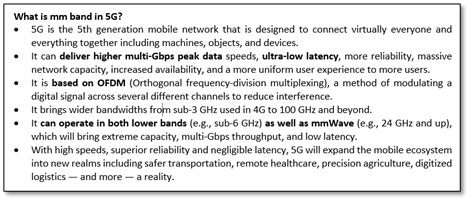
What are the major issues?
- The Satcom Industry Association-India (SIA) has urged TRAI to limit the inclusion of mmWave spectrum in the 5G auction as 27.5-31 GHz and 17.7-21.2 GHz bands have been preserved for satellite-based broadband services as per the decision taken by the International Telecommunication Union (ITU).
- As per estimates, inclusion of these Bandwidths could cost India’s economy up to $184.6 billion by 2030 aside from impact on FDI and employment generation benefits.
- Offering excessive spectrum resources in the upcoming 5G auction will result in citizens being denied benefits of high-demand, advanced satellite broadband services.
- Excessive spectrum for 5G poses the risks of the spectrum being unsold or, even worse, underutilised by terrestrial players at the expense of other players such as Satellite Operators.
What can be done?
- It is important to ensure that 5G operations do not interfere, impact or hamper the existing operations of satellite services.
- There is need to limit inclusion of mm Wave spectrum in any 5G auction to the internationally harmonized 24.25-27.5 GHz spectrum.
- Government should avoid multiple auctioning as National Frequency Allocation Plan already provides enough spectrum to satisfy India’s mid-band 5G requirements.
- With more than 120 countries expressing their intentions to follow the International Telecommunications Union (ITU) decisions and preserve the 27.5-31 GHz and 17.7-21.2 GHz bands for satellite broadband services, there is need to maintain the 27.5 GHz and above for fixed satellite services.
Sources:
Martin Luther King Jr.
On January 17, 2022, the USA will celebrate Martin Luther King, Jr., Day, honouring the achievements of Martin Luther King, Jr. A Baptist minister who advocated the use of nonviolent means to end racial segregation. Martin Luther King Jr Day is celebrated in the United States on the third Monday of January every year. The most influential of African American civil rights leaders during the 1960s, he was instrumental in the passage of the Civil Rights Act of 1964, which outlawed discrimination in public accommodations, facilities, and employment, and the Voting Rights Act of 1965. King was awarded the Nobel Prize for Peace in 1964. He was assassinated on April 4, 1968. Inspired by both Mahatma Gandhi and Christian values, King embarked on the path of non-violence to achieve racial equality in the US. The great leader is remembered for advancing civil rights by leading non-violent protests and civil disobedience campaigns. Dr King is still remembered for his famous "I Have a Dream" speech in 1963 to a crowd of over 250,000 on the National Mall in Washington D.C, USA.

Sources:
PM SVANidhi
In News
The Standing Committee on Housing and Urban Affairs presented its report on ‘PM Street Vendor’s Atmanirbhar Nidhi (PM SVANidhi)’ recently.
About PM SVANidhi
- PM SVANidhi was launched in 2020 as part of the Atmanirbhar Bharat package to provide credit for working capital to street vendors to resume their businesses after the impact of COVID-19.
- The scheme aims to help formalize the street vendors and open up new opportunities to this sector to move up the economic ladder.
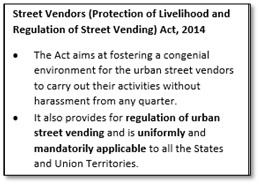
- PM SVANidhi is available for beneficiaries belonging to only those States/UTs which have notified Rules and Scheme under Street Vendors Act, 2014.
- Small Industries Development Bank of India (SIDBI) is the implementation partner of the Ministry of Housing and Urban Affairs (MoHUA) for scheme administration.
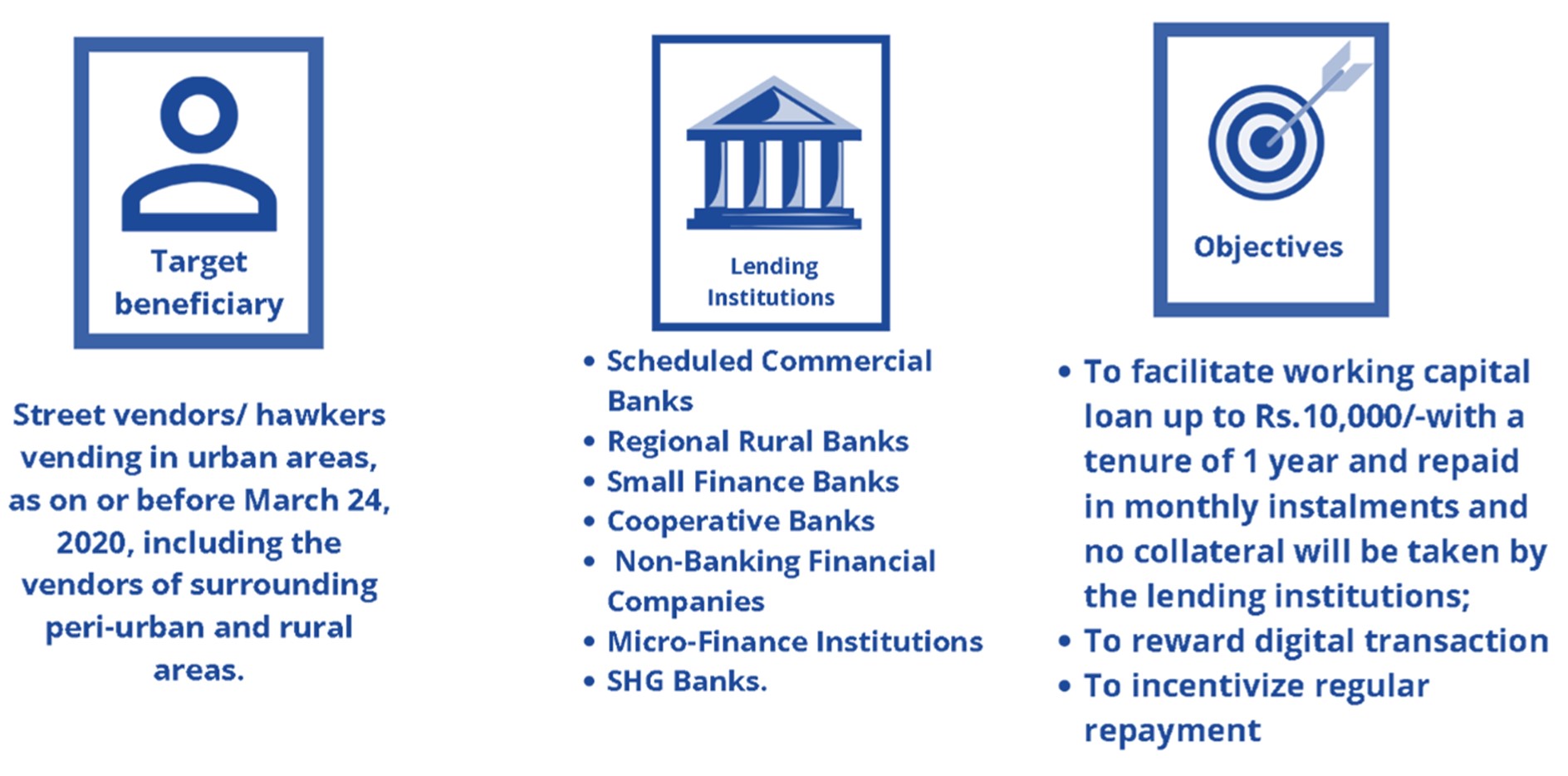
Important Features of the Scheme
- The scheme is a Central Sector Scheme, with an initial working capital of up to ₹10,000.
- Interest subsidy is provided to vendors at 7% on timely/ early repayment. Monthly cash-back incentive is to be provided on digital transactions.
- The Vendor shall become eligible for High loan if he/she does a timely repayment of the first loan.
- The vendors need to go through a Aadhar based e-KYC of beneficiaries except Assam & Meghalaya;
- The scheme has an end-to-end IT platform- Web portal & Mobile App. On-boarding of street food vendors is done on e-commerce platform.
- "Main Bhi Digital" drive to train the beneficiaries in digital transactions.
- Socio-economic profiling of street vendors' families is carried out to facilitate access to select Central government Schemes for their comprehensive welfare.
How can PM- SVANidhi Scheme be a game changer for Street Vendors/ Informal sector?
The share of loans disbursed under the Prime Minister SVANidhi micro-credit scheme for nano entrepreneurs such as street vendors has jumped to nearly 90 per cent. As of January, 2022, out of 43.95 lakh applications so far, 73 per cent applications (32.08 lakh) were sanctioned. Out of the sanctioned applications, 28.20 lakh applications were disbursed.
- Enables transition from Informal to Formal: For a country like India, where the informal sector still employs a large chunk of the employable population, schemes like these handhold the small and micro businesses amidst the crisis, and give them a business environment that facilitates their normal transition to the formalized economy.
- Enabling infrastructure: The PM-SVANidhi schemes require beneficiaries to onboard Digital payment platforms. Such schemes have been primarily successful due to the digital infrastructure that the government has created under the “Digital India scheme” since it came to power in 2014.
- Credit Guarantee: Apart from ample usage of digital infrastructure, the government has also roped in networks of banks (public, private, co- operative, small finance), NBFCs and MFIs by providing credit guarantee to these institutions. This has ensured that street vendors from far flung places and hinterlands can also have access to the scheme.
- Inclusive Scheme: The government has also allowed street vendors who are not covered under the urban local body-led surveys to avail this scheme which ensures every street vendor from the formal or informal sector can be eligible for the scheme. Such schemes facilitate working capital to the strata of society that would otherwise have to go to private lenders and borrow money at high interest.
Some of the Issues and Remedial Steps taken/needed under the Scheme
The report has found some critical problems related to the PM SVANidhi scheme and enumerated the remedial measures that have been taken and suggested some measures to rectify these problems.
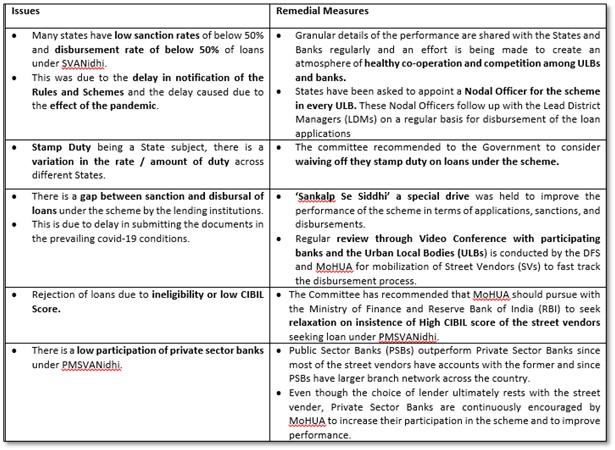
Way Forward
- Simplify Application Processing: Banks has been requested to simplify the internal processing guidelines to help faster processing of the applications of the Street Vendors.
- Uniform Interest Rates: Currently, different lenders offer different interest rates on loans under the scheme. It has been suggested that a uniform rate can be fixed for loans under PM SVANidhi to avoid confusion among street vendors.
- Integration of Systems: To facilitate smooth flow of data between the scheme portal and banks, which would speed up the processing of applications, banks were advised to integrate their systems with the PM SVANidhi portal through APIs.
- Private Banks have shown reluctance towards the integration with the API due to privacy concerns. These concerns need to be addressed for furthering the integration.
- Digital On-boarding: One of the challenges faced in the implementation of the Scheme is the delay in digital on-boarding of the beneficiaries by the lending institutions. The Lending Institutions need to expedite the process on their own or take help of third-party Digital Payment Aggregators (DPAs) like Paytm, Phone Pe, Bharat Pe, Google Pay etc with whom the Ministry had negotiated for free on-boarding of Street Vendors.
Question: Discuss how the PM SVANidhi aims to regularize and enable the street vendors.
Sources:
- PM SVANidhi: Loans to street vendors jump to nearly 90% of applications sanctioned
- PM SVANidhi Yojana lends a helping hand to the informal sector
- PM Street Vendor’s AtmaNirbhar Nidhi (PM SVANidhi)
- PM SVANidhi
- PM Street Vendor's AtmaNirbhar Nidhi (PM SVANidhi)
Pandit Birju Maharaj
This is image of Pandit Birju Maharaj, the Kathak maestro, who passed away on 17th January, 2022. He was 83. A recipient of the country’s second-highest civilian award, Padma Vibhushan, he was born Brij Mohan Nath Mishra on February 4, 1937, in a well-known family of Kathak dancers. Pandit Birju Maharaj donned several hats during his lifetime. While he was best known as a Kathak dancer, he was an equally prolific singer, poet and painter. He performed for the first time at the age of seven. He tried to incorporate mathematics and numbers into the dance form so that children can easily connect to the difficult intricacies of Kathak. He was fondly called Pandit-ji or Maharaj-ji by his disciples and legions of followers, and was one of India's best known artistes. Birju Maharaj was a descendant of the Maharaj family of Kathak dancers, which includes his two uncles, Shambhu Maharaj and Lachhu Maharaj, and his father and guru, Acchan Maharaj. Also being keenly observant, he always had something to say about day-to-day incidents, keeping people around him entertained with realistic imitations and vivid descriptions.
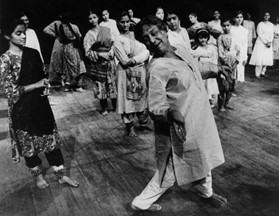
Source:
ZBNF can cause Yield Loss
- Context: Recently, an expert committee set up by Indian Council of Agricultural Research (ICAR) has stated that Zero Budget Natural Farming (ZBNF) could also lead to yield loss.
- With the survey made in seven states, the Committee found that there can be tremendous yield loss if ZBNF is adopted on a large scale which may compromise India’s Food Security.
- The National Academy of Agricultural Sciences (NAAS) has also criticised the “unproven” technology of ZBNF, which it says brings no incremental value gain to either farmers or consumers.
- Committee recommended some measures like integrated production system through conservation, intercropping, crop diversification and integrated nutrient management for improving soil health.
- ZBNF is a farming technique that seeks to bring down input costs for farmers by encouraging them to rely upon “natural products”.
- The method of ZBNF requires 98% of nutrients like carbon dioxide, nitrogen, water and solar energy are already available free from the air. Other 2% from soil, which makes it a ‘Zero Budget’.
- The move for Zero Budget Natural Farming was recognized as an ‘innovative model for doubling farmer’s income’.

Source:
Power transmission in Kenya through Power Grid Corporation of India Ltd.
- Context: Power Grid Corporation of India Ltd. has signed a joint development agreement with Africa50 to develop the Kenya Transmission Project on public-private partnership basis.
- Power Grid will provide technical and operational know-how to the project, while Africa50 will bring its project development and finance expertise and will act as a bridge between the Kenyan government and private investors.
- The Project deployment focuses development, financing, construction and operation of 400kV Lessos – Loosuk and 220kV Kismu – Musaga transmission lines under a PPP framework.
- The project will also improve both the supply and reliability of power transmission in Western Kenya and further create a demonstration effect to help increase private sector investments into the expansion of Africa’s power transmission networks, which is critical to bridging the continent’s electricity access gap.
- Africa50 was established by African governments and the African Development Bank to help bridge Africa’s infrastructure funding gap by facilitating project development, mobilizing public and private sector and investing in infrastructure on the continent.
- Africa50 currently has 31 shareholders, comprised of 28 African countries, the African Development Bank, the Central Bank of West African States (BCEAO), and Bank Al-Maghrib.
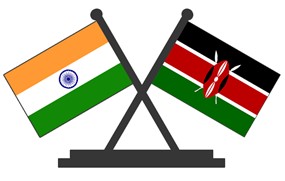
Source:
Swachh Vidyalaya Puraskar
- Context: Ministry of State for Education has recently launched the Swachh Vidyalaya Puraskar for year 2021-22.
- Swachh Vidyalaya Puraskar recognises, inspires and awards schools who have undertaken exemplary work in the field of water, sanitation and hygiene while also providing a benchmark and a roadmap for schools to make further improvements in future..
- The Swachh Vidyalaya Puraskar was first distributed by the Department of School Education and Literacy, in 2016-17 to create self-motivation and awareness about sanitation.
- All categories of schools, that is, government, government aided and private schools in both rural and urban areas can participate in the Swachh Vidyalaya Puraskar 2021-22.
- Government and private schools both can collaborate in these mission for 2021-22 via online portal and application.
- The scores will be automatically generated through subcategories – Water, Sanitation, Hand washing with Soap, Operation and Maintenance, Behavioral change and capacity
- Winning school will be receiving Rs. 60,000 per school under the ‘Samagra Shiksha’ scheme.
- Additionally, 6 sub-category awards have been introduced for the first time and entails money of Rs. 20,000/- per school.
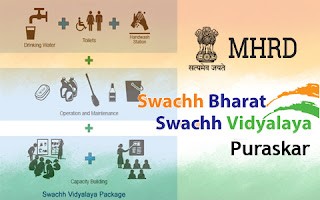
Source:
Home Security Dialogue
- Context: Recently, the meeting between India and US concluded on how to secure critical Infrastructures and Strategies/Policies towards them.
- Home Security Dialogue being an initiative of the Obama administration, the first meeting was held in May 2011.
- The Biden Administration had announced the re-establishment of these Dialogue that was previously discontinued by Trump government.
- Both the countries have identified further steps that can be taken to explore opportunities and synergies in advancing cooperation for cyber security, counter-terrorism, securing critical infrastructure, maritime and aviation surveillance among others.
- Homeland security is a uniquely American concept, which came to prominence after the 9/11 attacks in the US. Fundamental to the concept of homeland security is grouping counterterrorism initiatives, security from natural disasters and public health hazards with that of national security from any outside adversary.
- Homeland Security is not a term widely used in the security lexicon in India. The Indian equivalent is Internal Security (IS) and is looked after by the Ministry of Home Affairs (MHA). Currently, it encompasses an assortment of responsibilities from border management to internal securities. Together with Department of Home, Centre-State relationship, J&K Affairs and Official Languages, it makes six departments within the MHA.
- In India, presently the issue of Internal Security (IS) is being dealt with by many ministries. These are : Ministry of Home Affairs (MHA), Ministry of Defence (MoD), Ministry of Law and Ministry of External Affairs (MEA). The two lead ministries which manage the security needs of the Nation are the MHA and MoD.
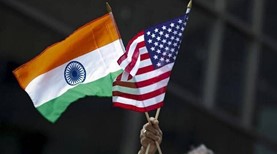
Source:
A ‘rare’ opportunity for India: HBL
Essence: The article talks about the need for India to ramp up the Rare Earth Production Capacity. Rare Earth Elements are crucial inputs for all high tech innovations of recent times including hybrid vehicles, cell phones, silicon chips, etc. But their global supply has remained extremely concentrated, first in the USA and now in China. China holds monopoly in its mining and processing and uses it as coercive tool in trade and diplomacy. India also holds 5th largest reserves of it but fails to channelize its potential despite having separate department for it that is Indian Rare Earth Ltd (IREL).
So, the article elaborate upon the various hurdles that India faces in developing the rare earth production. Also, the article stresses on the growing disenchantment of the global economy with China, which provides fantastic opportunity to India. It will help India attracting foreign direct investment in high tech manufacturing sector which could in turn help India achieving the goal of Atamnirbhar Bharat.
Why you should read this article?
- To understand the importance of Rare earth materials and China’s monopoly in RER production.
- To understand how the current situations provide an opportunity to India to develop this sector.
- To understand the steps that India would need to take to boost REE industry.
Source:
Predatory pricing is prising Indian livelihoods apart: TH
Essence: The editorial highlights the issue of predatory pricing and anticompetitive practices threatening the local and intermediary businesses in India. The article has given example of boycott of colgate products by commodity distributors in Maharashtra because Colgate company has supplied its products directly to the retailers through a model driven by mobile phone app services, bypassing the distributor chain. Though this model benefits the end consumer through low prices, but impacts the livelihood of the distributors and related businesses.
New innovations disrupting an existing process and rendering incumbents futile is generally a healthy process of ‘creative destruction’. But, in the name of technology disruption, these new models of B2B consumption by RelianceMart and Udaan utilize huge foreign capital available with them to undercut competition by bearing initial losses. This model of anticompetitive practices is way beyond creative disruption and threatens livelihood of millions of Indian families who are a part of traditional India’s supply chain. There should be a hault to such practices.
Why you should read this article?
- To understand the anticompetitive practices fostering in the name of technology disruption in India.
- To gain an insight into the case of Colgate and supply chain stakeholders in product distribution in India.
Source:
Storm warnings of a megacity collapse: TH
Essence: Urban floodings and its impact serves as a warning that vision of Indian cities as a vehicle of economic growth may be threatened by unsustainable urban development in the era of climate change.
Indian cities need urban planning which prioritizes ecology and sustainability over aesthetics and leading role for democratically elected local governments over centralized governance. Since both causes and effects of climate change are multidimensional, all relevant departments of state should work together instead of working in silos.
If urban India want to project itself as sustainable living space and investment hub, it must focus on empowering and capacity building of communities.
Why should you read this article?
- To understand causes of recurring urban flooding and its impact
- To understand various steps which should be taken to ensure sustainable urbanization.
Source:
The Wall of Gratitude
Background
- At all India level, around 150–199 additional million people will become poor due to COVID-19 crises. According to the World Bank, between 88 and 115 million people are being pushed into poverty.
- The donations and poverty elimination actions that were institutionalized have also somewhat hurted the sentiments and the dignity of the receiver at ground level as it was used as a weapon for publicity by powerful sections of the society.
How these wall is recognizing behavioral change in the Society?
- 'Neki ki Deewar' initiative funded by Delhi govt helps needy by providing clothes and shoes to them for free throughout the year.
- The wall is different from a charity box as it allows people to donate whatever they can and one is free to take the item they need without taking someone‘s approval.
- These helps maintain the dignity of the receiver and prevent hesitance/ publicity of the donor.
- Such initiatives help in building the emotional intelligence of the next generations and play a vital role in perpetuating equity and harmony.
- Hence, such initiatives can be carried forward in more public places or even among tribal communities for health services.
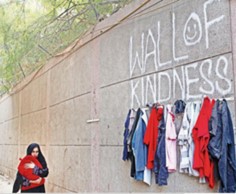
Quote: “The test of our progress is not whether we add more to the abundance of those who have much it is whether we provide enough for those who have little.”
- Franklin D. Roosevelt
Source:
Share the article
Get Latest Updates on Offers, Event dates, and free Mentorship sessions.

Get in touch with our Expert Academic Counsellors 👋
FAQs
UPSC Daily Current Affairs focuses on learning current events on a daily basis. An aspirant needs to study regular and updated information about current events, news, and relevant topics that are important for UPSC aspirants. It covers national and international affairs, government policies, socio-economic issues, science and technology advancements, and more.
UPSC Daily Current Affairs provides aspirants with a concise and comprehensive overview of the latest happenings and developments across various fields. It helps aspirants stay updated with current affairs and provides them with valuable insights and analysis, which are essential for answering questions in the UPSC examinations. It enhances their knowledge, analytical skills, and ability to connect current affairs with the UPSC syllabus.
UPSC Daily Current Affairs covers a wide range of topics, including politics, economics, science and technology, environment, social issues, governance, international relations, and more. It offers news summaries, in-depth analyses, editorials, opinion pieces, and relevant study materials. It also provides practice questions and quizzes to help aspirants test their understanding of current affairs.
Edukemy's UPSC Daily Current Affairs can be accessed through:
- UPSC Daily Current Affairs can be accessed through Current Affairs tab at the top of the Main Page of Edukemy.
- Edukemy Mobile app: The Daily Current Affairs can also be access through Edukemy Mobile App.
- Social media: Follow Edukemy’s official social media accounts or pages that provide UPSC Daily Current Affairs updates, including Facebook, Twitter, or Telegram channels.

